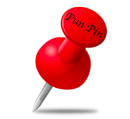The History of Aluminum
In 1787 scientist wondered if there was an unknown metal in alum.
They didn't have a way to extract it until 1825, Hans Christian Oersted, a Danish chemists, discovered a way to extract tiny amounts. These samples were not big enough to determine any properties of aluminum. Then Friedrich Wöhler, a
German chemist came along and was able to produce large samples to study in 1845. His method was later improved by Henri Étienne Sainte-Claire Deville, a French chemist in 1854. He was able to make a commercial production but the aluminum was priced to high to be widely used.
Reactivity:
Aluminum its self is highly reactive. Aluminum powder is very reactive, so reactive that it is used to fuel rocket ships. The two most common aluminum compounds are potassium aluminum sulfate (KAl(SO4) 12H2O) and aluminum oxide (Al2O3).
Only 8.2% of the earths crust is made up of Aluminum.
The Uses of Aluminum:
Aluminum and aluminum alloys are used to make cans, foils, and kitchen utensils. Aluminum can also be put on the surface of glass to make mirrors. It is used to make door knobs, window frames and kitchen utensils. Aluminum is preferred
when packaging meals because it keeps the food clean.
Citations:
Gangnon, Steve. "The Element Aluminum." It's Elemental -. N.p., n.d. Web. 11 Oct.
2015.
"Dent Fix Equipment." Dent Fix Equipment. N.p., 2015. Web. 12 Oct. 2015.
"Aluminum Metal Element 30 Grams 99.99%." Set of 1 Aluminum99.99% PuritySKU# Al30. N.p., 2015. Web. 12 Oct. 2015.
Symes, R. F. Dr. "Ore Minerals and Metals." Eyewitness Rock & Mineral. N.p.: DK Pub., 2008. 56. Print.
Gray, Theodore W., and Nick Mann. "Aluminum." The Elements: A Visual Exploration of Every Known Atom in the Universe. New York: Black Dog & Leventhal, 2009. 38-41. Print.
Duncan, Richard D. "Aluminum." Elements of Faith: Faith Facts and Learning Lessons from the Periodic Table. Green Forest, AR: Master, 2008. 30-31. Print.

Did you know that Aluminum is also used to conduct electricity?
Wow! Thats shocking!
Wow! Thats shocking!
